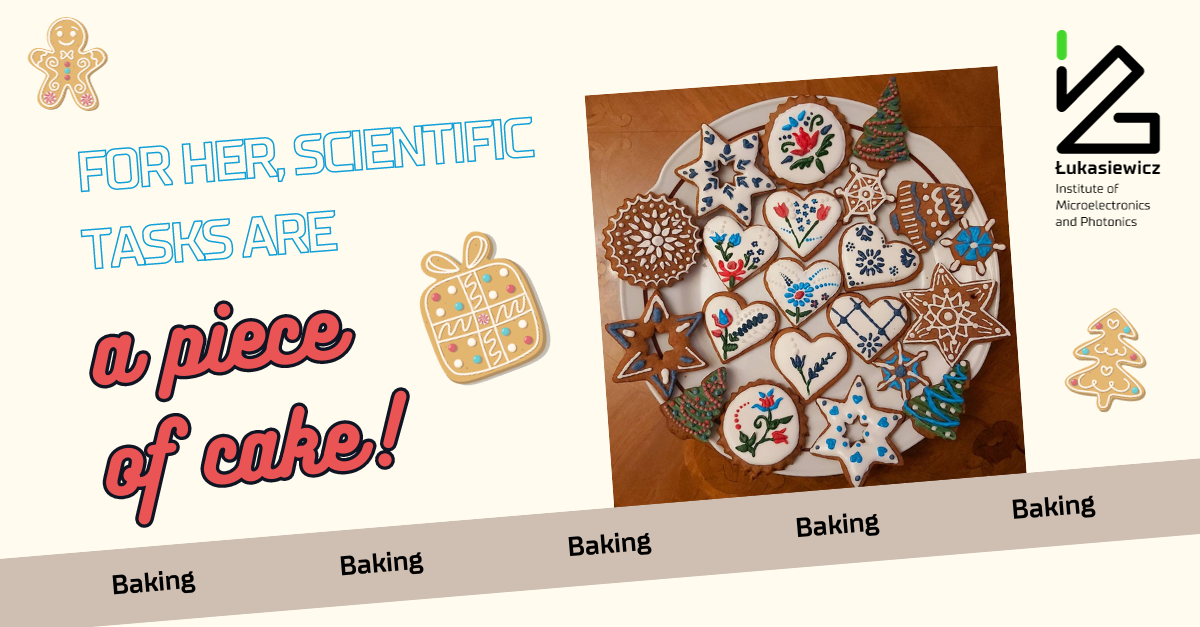What does science have in common with baking cakes? – we asked Karolina Olucha, a specialist in photolithography and chemical processing, who also happens to be a huge baking enthusiast.
“If we take a closer look, science and pastry-making have a lot in common. First of all (and probably most importantly), in both cases, it’s crucial to follow step-by-step instructions, be meticulous and have some manual skills.
Both, in the laboratory and in the kitchen, the order in which the reagents are used, their accurate measurement and mixing are significant. Decorating Christmas gingerbread cookies requires at least the same precision as handling pipettes and tweezers.
Secondly, baking is nothing more but chemical changes. To make Christmas gingerbread soft, we add baking soda, i.e. sodium bicarbonate. Soda reacts with acids (in the case of gingerbread, they come from honey, which has an acidic pH ranging from 3.7 to 4.8), creating bubbles of carbon dioxide, which „are trapped” in the dough.
Moreover, the delightful aroma and golden color of baked goods are a result of two reactions – caramelization and the Maillard reaction. Caramelization occurs when we heat sugar, while the Maillard reaction requires not only reducing sugars but also amino acids. The Maillard reaction produces numerous volatile compounds responsible for the aroma and non-volatile compounds responsible for the brown color.
The course of the reaction can be controlled by temperature (higher temperature speeds it up) and the pH of the dough – an alkaline environment speeds up the Maillard reaction. We take advantage of this when baking, for instance, pretzels, which are boiled in water with soda, thanks to which they have that beautiful, brown color.”


